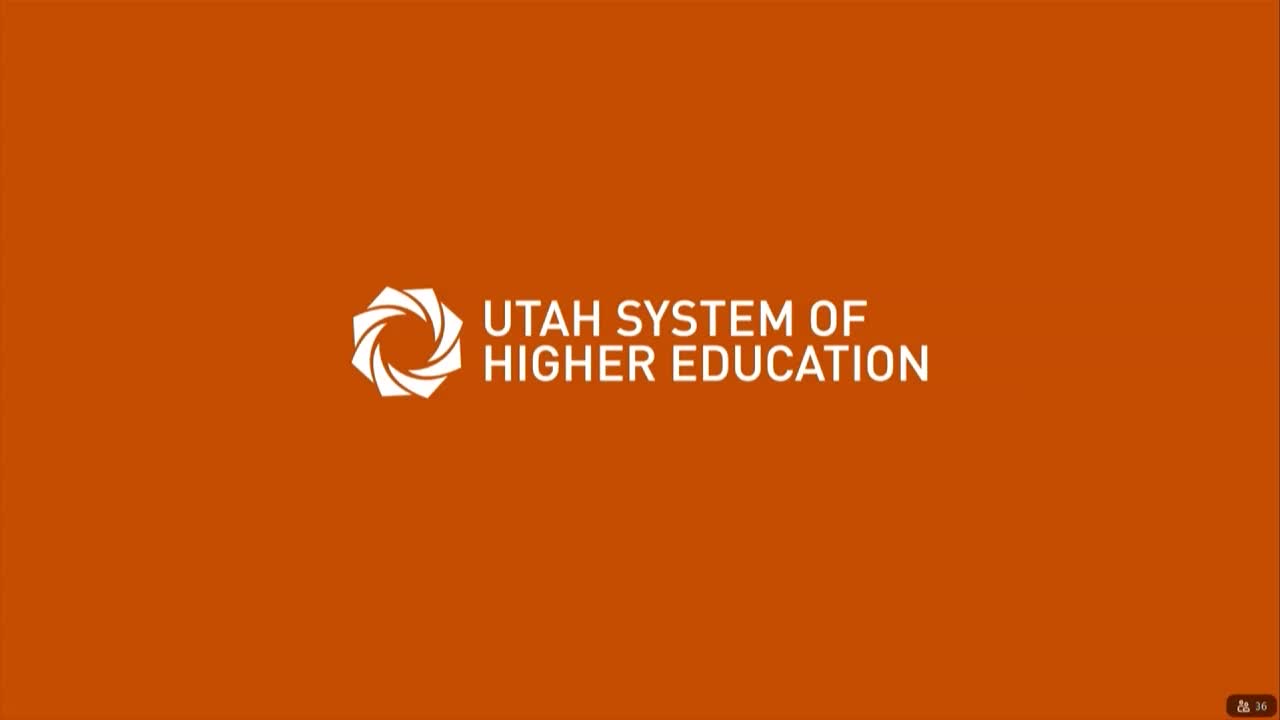Utah Colleges Adjust Enrollment Strategies Amid Budget Cuts and Workforce Demands
September 15, 2025 | 2025 Utah Legislature, Utah Legislature, Utah Legislative Branch, Utah
This article was created by AI summarizing key points discussed. AI makes mistakes, so for full details and context, please refer to the video of the full meeting. Please report any errors so we can fix them. Report an error »

During the Executive Appropriations Committee meeting on September 15, 2025, a significant focus was placed on the future of education in Utah, particularly regarding the need for strategic investments in programs that align with anticipated industry growth. Committee members discussed the importance of recognizing that low enrollment in certain programs does not necessarily reflect their potential value, especially in emerging fields.
A key takeaway from the discussions was the call for flexibility in funding allocations. Officials emphasized the necessity of adapting plans based on new information about community needs and industry demands. This approach aims to ensure that educational institutions can pivot quickly to support workforce development in high-growth sectors, particularly in technology and artificial intelligence (AI).
Speaker comments highlighted the collaborative efforts between the legislature and the Board of Higher Education, with praise for the passage of House Bill 265, which has facilitated better funding strategies. The committee acknowledged the reduction of administrative costs, allowing for more resources to be directed toward student support and educational opportunities.
Concerns were raised about the current limitations in computing power necessary for AI research and education. It was noted that Utah is well-positioned in AI readiness but still lacks sufficient infrastructure to meet growing demands. The discussion pointed to the need for strategic investments in computing capacity, suggesting that a coordinated approach among institutions could maximize resources and benefits across the board.
In conclusion, the meeting underscored a proactive stance on educational funding and resource allocation, aiming to prepare Utah's workforce for future challenges while ensuring that institutions remain responsive to the evolving landscape of industry needs. The anticipated outcomes include enhanced educational offerings and improved alignment between academic programs and job market demands.
A key takeaway from the discussions was the call for flexibility in funding allocations. Officials emphasized the necessity of adapting plans based on new information about community needs and industry demands. This approach aims to ensure that educational institutions can pivot quickly to support workforce development in high-growth sectors, particularly in technology and artificial intelligence (AI).
Speaker comments highlighted the collaborative efforts between the legislature and the Board of Higher Education, with praise for the passage of House Bill 265, which has facilitated better funding strategies. The committee acknowledged the reduction of administrative costs, allowing for more resources to be directed toward student support and educational opportunities.
Concerns were raised about the current limitations in computing power necessary for AI research and education. It was noted that Utah is well-positioned in AI readiness but still lacks sufficient infrastructure to meet growing demands. The discussion pointed to the need for strategic investments in computing capacity, suggesting that a coordinated approach among institutions could maximize resources and benefits across the board.
In conclusion, the meeting underscored a proactive stance on educational funding and resource allocation, aiming to prepare Utah's workforce for future challenges while ensuring that institutions remain responsive to the evolving landscape of industry needs. The anticipated outcomes include enhanced educational offerings and improved alignment between academic programs and job market demands.
View full meeting
This article is based on a recent meeting—watch the full video and explore the complete transcript for deeper insights into the discussion.
View full meeting

